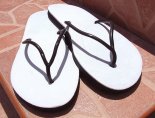Saint Lucia
Caribbean SeaLevel of surfing
Beginner
Quality of surf
Good
Call code
1758
Net code
lc
Area
620
Coastline
0 km
Climate
Tropical Maritime
Hazards
Very Isolated, Cyclones
Best Months
October - January
Population
160765
Currency
East Caribbean Dollar (XCD)
Time Zone
(UTC-4)
Special Requirements
Private Beaches
introduction

Doviende: Saint Lucia geography map, 24 September 2005
Saint Lucia is a British Commonwealth country that is an island in the Caribbean, off the coast of Central America. Part of the Lesser Antilles, it is located north of the islands of Saint Vincent and the Grenadines, northwest of Barbados and south of Martinique.
It is also known as the "Helen of the West Indies" because it switched
between British and French control so often it was likened to the
mythical Helen of Troy.
The capital city of Saint Lucia is Castries where one third of the population resides. The local climate is tropical most of the time, moderated by northeast trade winds, with a dry season from January to April and a rainy season from May to December.
surfing

David Wong: St Lucia Beach; 2006
The Caribbean, she is a harsh mistress. All of the islands in the Greater and Lesser Antilles share at least some aspect towards the North Atlantic and therefore are exposed to any passing fronts that generate of the East American Coast and transit the North Atlantic. These fronts often pass a good way to the north and swell decay can be a problem.
Regular windswell is a constant on the east coast of all of the island groups and hence there is almost always something to keep you occupied and off the rum for a few hours. too much wind can be a bad thing though and onshore days are very common, no matter how early in the morning you manage to peel yourself out of your cot and stumble down to the beach.
The third source of swell in the region are from passing hurricanes. Some of the strongest storm ever recorded on the planet file through here regularly. Technically the season spans June to November with early September being the peak. The ideal scenario is for the hurricane mass to pass clear of any inhabited areas and sit well offshore in the deep Carribean for a few days prior to disipating. The result is typically 3-5 days of western swell that lights up the hidden western points and reefs of the Caribbean. The persistant NE/E trade winds will gently fan these breaks all day long. It is then that some of the rarer points and breaks of St Lucia come to life. Surf exploration doesent get any better than this.
where to stay

Wadester16: Marigot Bay, St. Lucia, West Indies, 9 January 2008
St. Lucia is home to a huge number of resort hotels as well as small boutique hotels and self-catering villas, condos, and vacation apartments.
There are so many luxurious resorts with numerous facilities here that you could probably occupy yourself in one, without going outside for a month!- Ladera - 5 Star - Amazing Views, Eco-Tourist
- Stonevield Estate Villa Restort
- Sandals - Exclusively to couples only
- Anse Chastenet - 5 Star
- Rendezvous
- LeSPORT
what to pack

Flashdance: A pair of very simple Moroccan flip flops called "Cabjuks"; 25 May 2007
Trainers, loose clothing - everything for the hot weather. Definitely take along some bug repellent spray, good sunscreen and sunglasses! Better take your medicines with you (esp. anti histamine tablets), as the brands can be unfamiliar and cost more.
Though many resorts have snorkelling gear, better take your own,
especially if you plan to do a bit of travelling to different islands.
Take a few light and casual things, nothing fashionable – you won’t
need it there. Camera, adaptor, good books to read and music. Oh, yeah,
booties, helmet and top will be useful on the reef break, as it can get
quite shallow.






